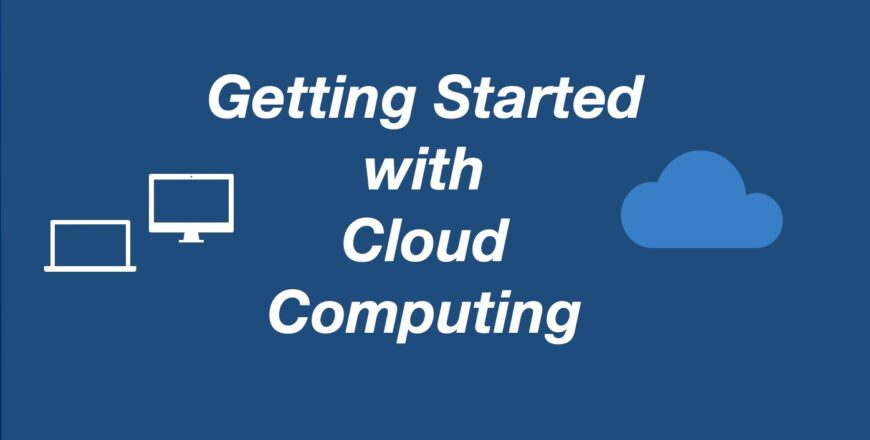Getting Started with Cloud Computing

Welcome to the course-“Getting started with Cloud Computing”.
The intent of this course is to provide practical guidance on how to get started with Cloud computing. This is the foundational course and a prerequisite for other cloud computing courses. This course is targeted at students and software practitioners who want to get started with cloud computing and start building cloud applications on platforms like Google Cloud, Microsoft Azure, Amazon AWS, or any cloud provider.
Introduction
The intent of this course is to provide practical guidance on how to get started with cloud computing and Google Cloud and be productive in the shortest possible time frame.
This course provides a mix of basic foundation concepts, along with advanced topics which teach you practical cloud computing concepts and fundamentals, the “why” and “how” part of getting things done to build cloud applications. The concepts are generic in nature and applicable to all cloud providers like AWS and Azure, but the Labs demonstration is available only for Google Cloud.
Apart from cloud computing, the course also teaches you dual skills on creating multi-cloud applications - basically, build applications in a way that can be deployed to any cloud provider, like Google Cloud, Azure, or AWS. Secondly, the course teaches you practical ways of getting things done that would help you in your cloud journey.
So, if you are new to cloud computing and need to build a strong foundation, or getting started on Google Cloud, or want to know how to build multi-cloud applications, then this course is for you.
As part of this course, there are many hands-on sessions, and gradually, we would build an end-to-end production-ready application on Google Cloud.
The course will definitely give you a head start, but you need to look for other sources, like cloud documentation offered by the providers, to dive deep into the details. Each cloud provider provides 100 of services, and you usually leverage them based on the requirements of your application and start building expertise on it, like what service can be used for which requirements.
Cloud is a vast topic, and you can’t fit all concepts in one course. Secondly, Learning is a continuous process. My job is to introduce you to the concepts, provide you with hands-on expertise, and help you build production-grade applications. You can use this as a solid foundation to build cloud applications confidently.
The course is divided into learning sessions, visual cards, and Labs. Each session provides just the right level of detail, with visual cards providing key messaging or takeaways and Labs providing step-by-step instructions through video
Cloud Computing Basics
This is our first session, where I will talk about what cloud computing is and the need for it.
So, to highlight some of the benefits of cloud computing, it's definitely cost-effective, it provides effective resource utilization through a technology called virtualization, and providing shared infrastructure.
If the cloud provides all these benefits, do you think all businesses run on the cloud? Let’s check out the answer in this video.
Types of Cloud Computing
In this video, we will talk about types of cloud computing.
There are primarily 3 main models for cloud computing, Infrastructure as a service (IaaS), Platform as service (PaaS), and Software as a service (SaaS). These models are now extended to a few more, like container as a service and serverless, but let's focus on the primary ones.
Cloud Concepts : Virtualization Containers and Difference between them
In this video, we will look at what is virtualization technology.
In this video, we will look at what is container technology.
In this video, we will look at how container technology differs from Virtual Machines
Cloud Platform and Environments
A cloud platform is a computing platform that provides computing services and offerings using virtualization technology. Let's explore the details in the video.
In this video, we will go over the types of cloud environments - Hybrid Cloud, Multi-Cloud, and Cloud on the Edge.
Compare 100 + services from Azure, AWS, and Google Cloud.
The tool provides various filters to search for a specific product capability - Multi-Cloud, Analytics, DevOps, Containers, Database, API, Serverless, Storage, and many other services.
The tool is freely available at - https://cloudsolutions.academy/cloud-compare/


